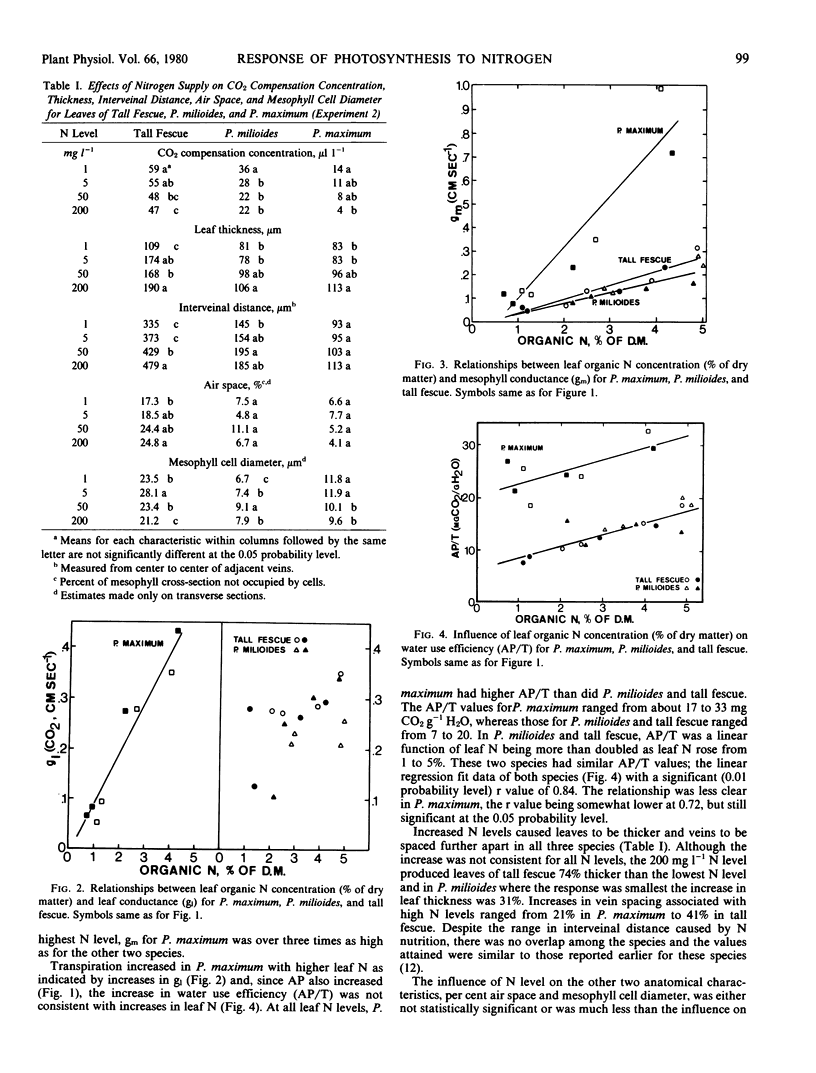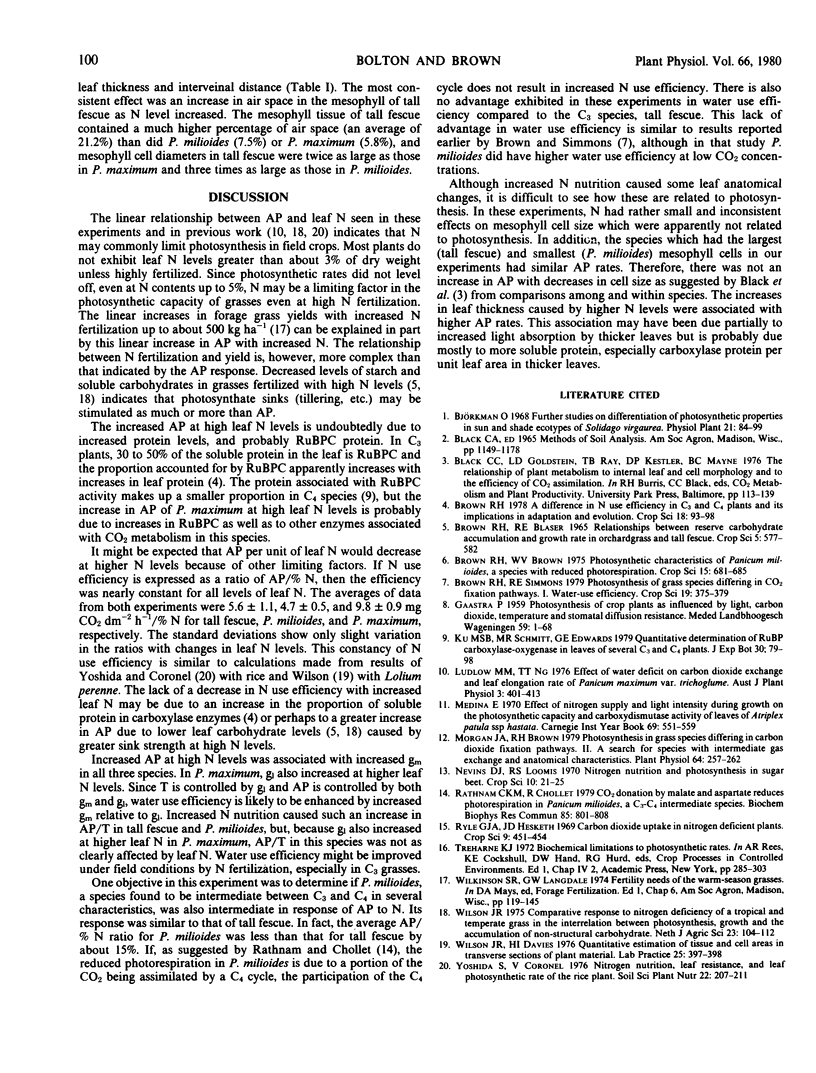Abstract
The response of apparent photosynthesis to N nutrition was studied in the C3 grass, tall fescue (Festuca arundinacea Schreb.), in the C4 species Panicum maximum Jacq., and in Panicum milioides Nees ex Trin., a species with characteristics intermediate between C3 and C4 photosynthetic types. Plants were grown in culture solution containing 1, 5, 50, and 200 milligrams N per liter. Apparent photosynthesis was measured on the youngest fully expanded leaves at 320 microliters of CO2 per liter of air and 21% O2. Leaf conductance was calculated from transpiration measurements, and CO2 compensation concentrations were also estimated. Several leaf anatomical characteristics were studied on plastic-embedded material. Leaf N content was determined on leaves which were used in photosynthesis measurements.
Apparent photosynthesis increased in a linear fashion with increases in leaf N content in all three species. The increase in apparent photosynthesis per unit increase in leaf N was over twice as great in P. maximum (9.7 milligrams CO2 per square decimeter per hour for each increase of 1% leaf N) as in P. milioides and tall fescue. Apparent photosynthesis and its response to N level were similar in P. milioides and tall fescue, but at leaf N concentrations above 2%, apparent photosynthesis in these two species was only about one-half of that in P. maximum. Increases in apparent photosynthesis due to higher N levels were accompanied by increases in both leaf and mesophyll conductances in P. maximum, whereas in P. milioides and tall fescue only mesophyll conductance was significantly correlated with leaf N. Water use efficiency (apparent photosynthesis/transpiration) increased in a linear manner with increased leaf N in all three species but was more closely related to leaf N in P. milioides and tall fescue than in P. maximum. High N levels tended to increase leaf thickness and interveinal distance in all three species. The percentage of air space in leaf tissue and the mesophyll cell diameter were either not affected or changed only slightly by N nutrition with the exception that percentage of air space in tall fescue leaves rose from 17.3 to 24.8 with an increase in solution N level from 1 to 200 milligrams per liter. Although P. milioides has been shown to have photosynthetic and leaf anatomical characteristics intermediate to C3 and C4 species, its response to N was similar to that of the C3 grass, tall fescue.
Full text
PDF



Selected References
These references are in PubMed. This may not be the complete list of references from this article.
- Morgan J. A., Brown R. H. Photosynthesis in Grass Species Differing in Carbon Dioxide Fixation Pathways: II. A Search for Species with Intermediate Gas Exchange and Anatomical Characteristics. Plant Physiol. 1979 Aug;64(2):257–262. doi: 10.1104/pp.64.2.257. [DOI] [PMC free article] [PubMed] [Google Scholar]
- Rathnam C. K., Chollet R. CO2 donation by malate and aspartate reduces photorespiration in Panicum milioides, a C3-C4 intermediate species. Biochem Biophys Res Commun. 1978 Nov 29;85(2):801–808. doi: 10.1016/0006-291x(78)91233-0. [DOI] [PubMed] [Google Scholar]


